
The National Association of Colored Women's Clubs (NACWC) is an American organization that was formed in July 1896 at the First Annual Convention of the National Federation of Afro-American Women in Washington, D.C., United States, by a merger of the National Federation of African-American Women, the Woman's Era Club of Boston, and the Colored Women's League of Washington, DC, at the call of Josephine St. Pierre Ruffin. From 1896 to 1904 it was known as the National Association of Colored Women (NACW). It adopted the motto "Lifting as we climb", to demonstrate to "an ignorant and suspicious world that our aims and interests are identical with those of all good aspiring women." When incorporated in 1904, NACW became known as the National Association of Colored Women's Clubs (NACWC).
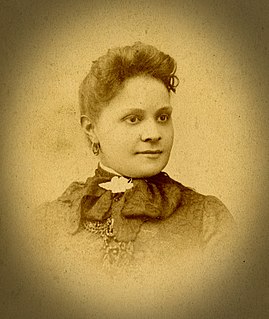
Frances "Fannie" Barrier Williams was an African American educator and political and women's rights activist, and the first black woman to gain membership to the Chicago Woman's Club. She became well known for her efforts to have black people officially represented on the Board of Control of the World's Columbian Exposition in 1893. She was also a musician, a portraitist and studied foreign languages.

Fanny Jackson Coppin was an American educator, missionary and lifelong advocate for female higher education.

Delilah Leontium Beasley, was a historian and newspaper columnist for the Oakland Tribune in Oakland, California. Beasley was the first African-American woman to be published regularly in a major metropolitan newspaper. Beasley was also first to present written proof of the existence of California's black pioneers in her book Slavery in California (1918) and her classic, The Negro Trail-Blazers of California (1919). Her career in journalism spanned more than 50 years. She detailed the racial problems in California and the heroic achievements by Blacks to overcome them during the late 19th century and early 20th century.
African-American women began to agitate for political rights in the 1830s, creating the Boston Female Anti-Slavery Society, Philadelphia Female Anti-Slavery Society, and New York Female Anti-Slavery Society. These interracial groups were radical expressions of women's political ideals, and they led directly to voting rights activism before and after the Civil War. Throughout the 19th century, African-American women like Harriet Forten Purvis, Mary Ann Shadd Cary, and Frances Ellen Watkins Harper worked on two fronts simultaneously: reminding African-American men and white women that Black women needed legal rights, especially the right to vote.

Sarah Massey Overton was a suffragist, women's rights activist, and African-American rights activist.
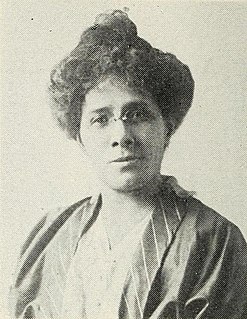
Hettie Blonde Tilghman (1871–1933) was an American social activist around Oakland, California in the late 1800s and early 1900s. Over the course of her career she held multiple leadership roles in many activist groups while creating and managing day cares and youth clubs. A major advocate for black women and youth in the Bay Area, Tilghman helped pave the way for many activists who would follow her in subsequent generations. Tilghman co-founded the Phyllis Wheatley Club of the East Bay.

Lydia Flood Jackson was an American businesswoman, suffragist, and clubwoman.
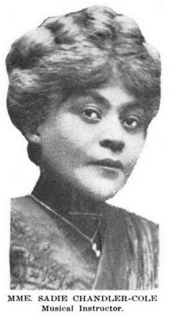
Sadie Chandler Cole was an American singer, music educator, and civil rights activist based in southern California.

Frazelia Campbell was an American classicist and teacher. She was featured in the "12 Black Classicists" travelling exhibition celebrating the achievements of African Americans working in Classical education.

Eva Carter Buckner was a prominent African-American suffragist, poet, and songwriter.
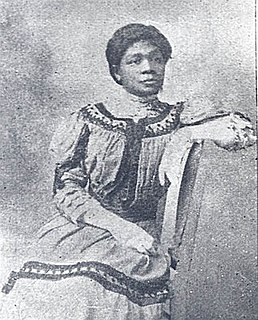
Harriet Redmond, also known as Hattie Redmond, was an African-American suffragist who lived and worked in Portland, Oregon. Born in St. Louis, Missouri, she moved to Oregon at a young age where she then became an active member of the suffragist movement.
Myra Virginia Simmons was a California suffragist and leader of the Colored American Equal Suffrage League (CAESL). She was a prominent Bay Area community organizer who served as Chair of the Women’s Civic and Progressive League in Oakland.
This timeline provides an overview of the political movement for women's suffrage in California. Women's suffrage became legal with the passage of Proposition 4 in 1911 yet not all women were enfranchised as a result of this legislation.
Women's suffrage in California refers to the political struggle for voting rights for women in the state of California. The movement began in the 19th century and was successful with the passage of Proposition 4 on October 10, 1911. Many of the women and men involved in this movement remained politically active in the national suffrage movement with organizations such as the National American Women's Suffrage Association and the National Woman's Party.
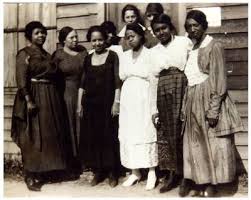
Fannie Hopkins Hamilton(1882 – 1964) was a dress maker and suffragist who joined the Equal Suffrage Study Club and uplifted the black community in Wilmington, Delaware. She was a leader, contributor, activist, and supportive teacher throughout her life as a suffragist. Fannie Hopkins Hamilton will continue to inspire women today with her courageous and intelligent works as a suffragist.

Phyllis Terrell Langston was a suffragist and civil rights activist. She worked alongside her mother, Mary Church Terrell, in the National Association of Colored Women's Clubs and the White House pickets during demonstrations made by the National Woman's Party.
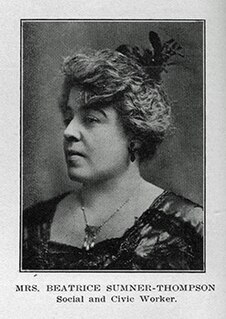
Beatrice Sumner Thompson (1874-1938) was an American suffragist and activist.

Fannie Franklin Wall was a clubwoman, civic leader, community activist, and children's home founder.
















